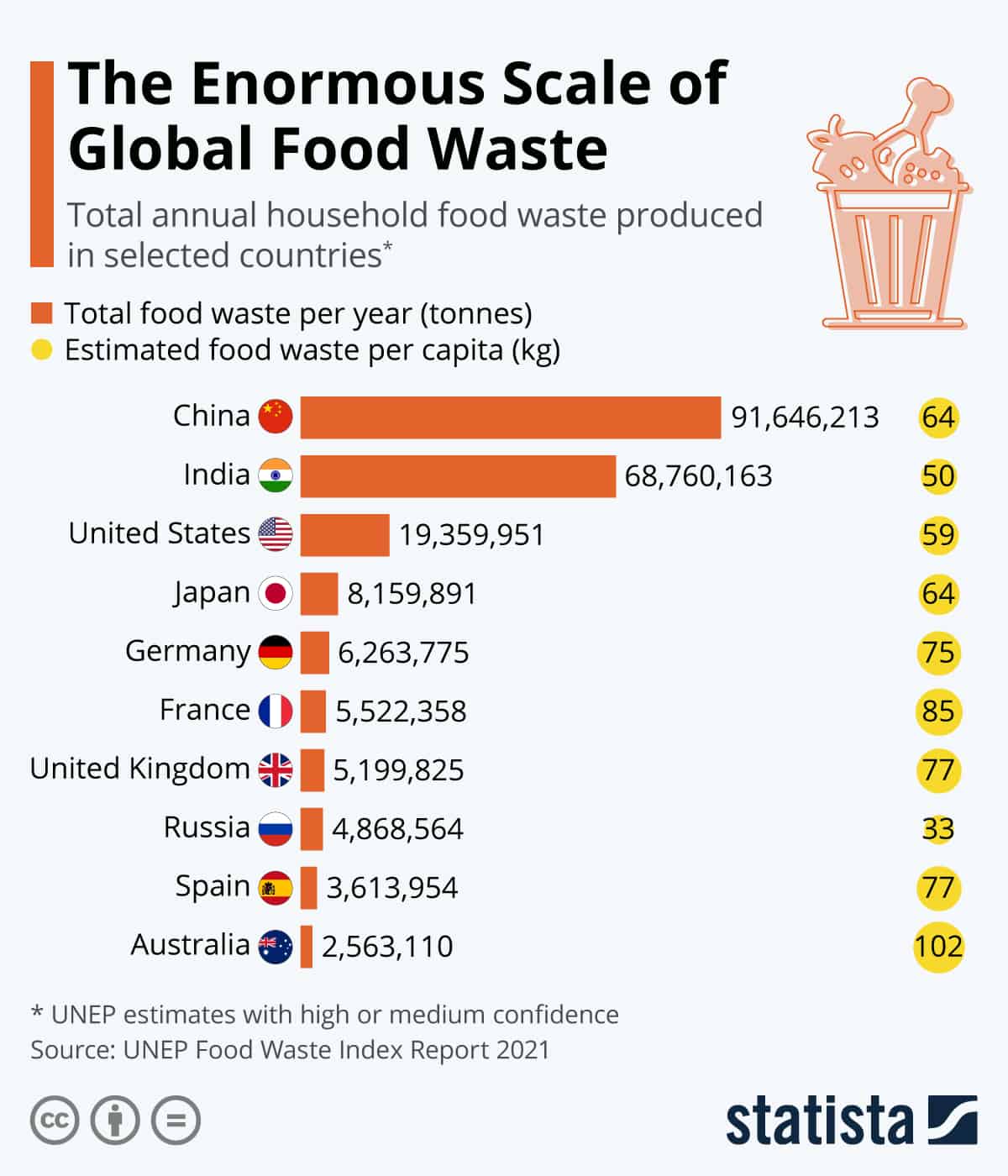The global food waste problem has reached phenomenal proportions, reaching a shocking billion-tonne mark.

According to the 2021 Food Waste Index released by the UN Environment Programme, 931 million tonnes of food waste is generated globally annually, with households contributing 569 tonnes and food service (244 million tonnes) and retail sectors producing 118 million tonnes respectively.

Credits: https://www.statista.com/chart/24350/total-annual-household-waste-produced-in-selected-countries/
Each person in the world produces an average of 74kg of waste per year regardless of income group - suggesting there is a need for widespread improvement to address this global food waste crisis.
According to the index, global food waste significantly contributes to greenhouse gas emissions.

If it were a country, loss and waste from agriculture would rank third worldwide.
To get an idea of just how wasteful countries can be when it comes to food consumption, let's take a look at some numbers:
- China discards 91.6 million tonnes annually.
- India wastes 68.8 million tonnes.
- The U.S. ranks lower with 19.4 million tonnes.
- France and Germany in Europe produce between five.
Global food waste production differs significantly depending on the region:
- Households in India discard an average of 50kg annually.
- Americans discard 59 kilograms.
- Australia may have a lower total food waste (2.6 million tonnes annually), but its per capita waste index shows 102 kilograms per household annually.
- Russia generates an estimated 4.9 million tonnes of household waste annually, with only 33 kg produced per person.
Conclusion
Food waste contributes a significant portion of greenhouse gas emissions related to agriculture.
Globally, excessive food waste accounts for approximately one-third of all food produced annually; in the U.S. alone, 30% never make it onto tables due to spoilage, poor quality, or too expensive for consumers.
Reducing food waste has many advantages to the environment and Americans - always ensure enough leftovers for future meals!
To minimize food waste, plan and have enough leftovers in the fridge and freezer to regularly provide your family with nutritious meals.
If all do not enjoy a dish, freeze it for later use or invest in a large freezer so there will always be enough for everyone.
Other methods - buying in bulk, serving leftovers with side vegetables or salad, etc.- can help you reduce wasteful eating habits.

